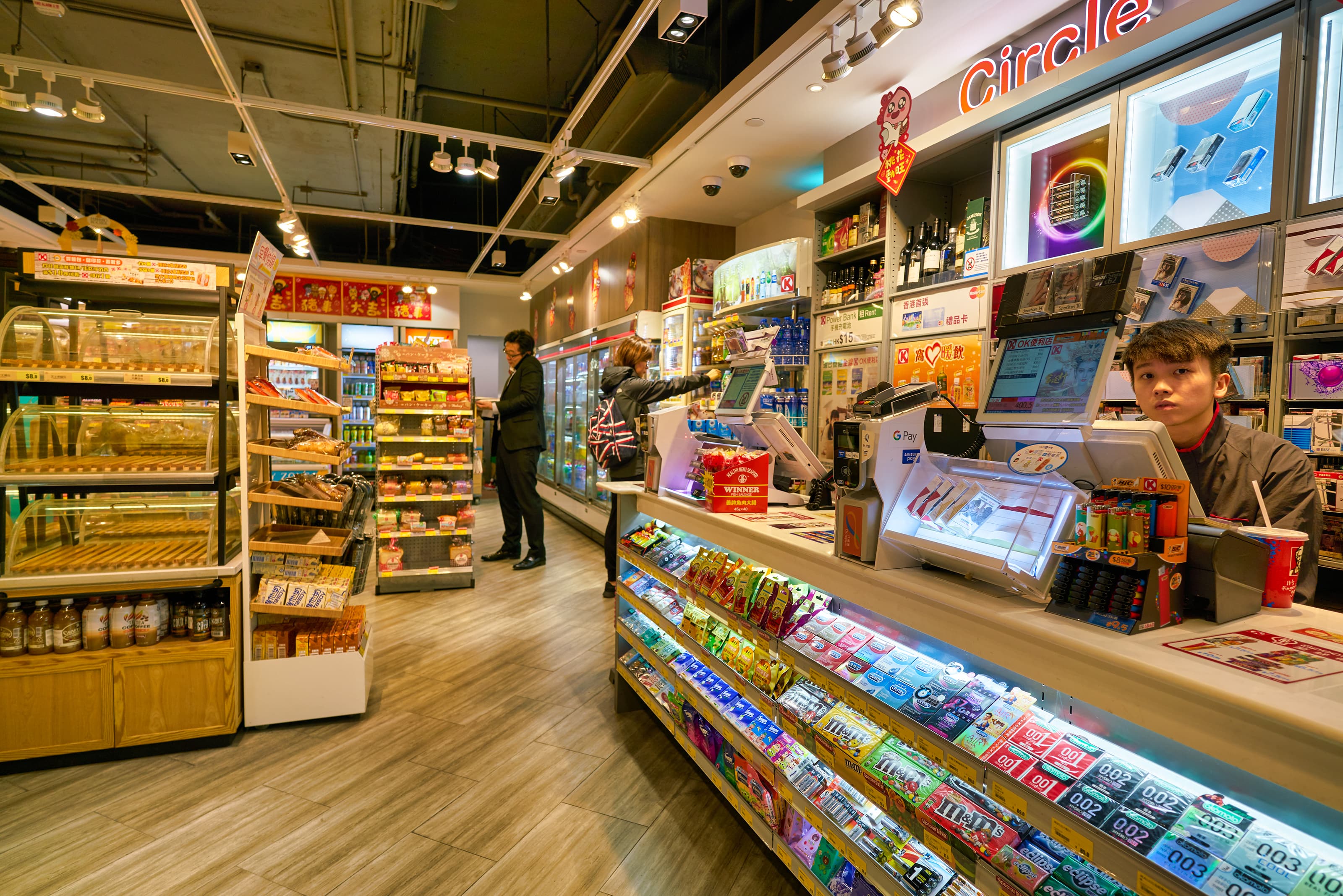The Evolution Of Convenience Stores Into Retail Leaders

On this page
For decades, convenience stores have served as pit stops, tacked onto gas stations and highways to sell a few snacks, beverages, and lottery tickets. But that image has shifted significantly over the past twenty years. What was once an afterthought in the broader retail landscape is now emerging as a small-format retail leader. The modern convenience store blends data, experimentation, and customer-centric design to offer more than just convenience. It offers a glimpse into the future of retail.
READ THE eBOOK: Five Imperatives For Digital-Savvy Retailers
From Transactional To Transformational Retail
Two decades ago, the average convenience store in the United States didn’t look much different from its predecessors in the 1980s. Shelves were stocked with sugary drinks, cigarettes, and packaged snacks. The emphasis was on speed and transaction volume. However, as customer expectations evolved and technology matured, a new model emerged.
Retailers like Wawa and Sheetz helped lead this transformation. No longer just fueling stops, these regional favorites began investing in fresh food offerings, made-to-order meals, digital ordering systems, and loyalty programs. Wawa, in particular, became known for its touchscreen ordering kiosks long before fast-food chains adopted them widely. Sheetz leaned into 24/7 accessibility, gaming partnerships, and a loyal Gen Z fanbase drawn to its quirky brand identity and tech-enabled service.
Convenience stores began to shift from purely functional spaces into destinations. They still offered speed, but they also began to prioritize quality, personalization, and community relevance. Today’s leading convenience retailers treat their stores as test labs where new product formats, tech integrations, and service models can be trialed quickly and adjusted based on real-time feedback.
Japan’s Masterclass In Convenience
To understand where this format can go next, look to Japan. Convenience stores, known as konbini, have long been a cornerstone of daily life in Japan. Chains such as 7-Eleven Japan, Lawson, and FamilyMart have redefined what “convenience” truly means.
In Tokyo, it’s common to find a konbini every few blocks, each offering a staggering range of services: freshly made bento boxes, bill payments, ATMs, ticketing, copy machines, and even the ability to receive online shopping orders. These stores are optimized not just for location and selection but for hyper-efficiency and localized demand.
Japan’s convenience stores are data-driven operations at their core. Real-time sales data informs stocking decisions down to the hour. Shelf layouts are fine-tuned based on behavioral patterns and micro-local trends. Seasonal and limited-time products are used to drive repeat visits. And rather than trying to serve everyone with everything, each store tailors its inventory and services to the needs of its neighborhood.
The attention to operational precision and customer behavior in Japan has become a model for global convenience retailers. Many now study Japanese konbini for inspiration. The takeaway is clear: when convenience is executed with discipline and insight, it becomes more than a transaction. It becomes a habit.
READ THE BLOG: Japan’s Innovative Approach To Luxury Shopping
Why This Evolution Matters
This shift isn’t just interesting for the world of gas stations or roadside diners. The transformation of convenience stores illustrates a broader trend in retail: the increasing demand for flexibility, relevance, and immediacy.
Modern consumers expect seamless shopping experiences that fit into their lives, not the other way around. They don’t just want stores to be open late. They want high-quality food at 10 p.m., the ability to scan and pay via mobile app, and curated selections that feel made for them. This is precisely what convenience stores are now delivering.
As retail faces an ever-evolving mix of pressures, the success of small-format, high-efficiency stores offers a compelling path forward. Brands that can do more with less — less square footage, less staffing, less inventory — are better positioned to adapt to urbanization, changing traffic patterns, and evolving shopper behaviors. Convenience stores prove that smaller doesn’t mean less powerful. If anything, the combination of digital tools and compact footprints allows for more experimentation and faster learning cycles.
Lessons For Other Categories
Other retail categories can take more than a few cues from the convenience playbook.
1. There’s the power of experimentation
Many convenience chains test new items and services at a handful of locations before scaling up. 7-Eleven’s U.S. division has tested everything from drone delivery to cashierless stores. Circle K has experimented with frictionless checkout and automated back-of-house operations. These rapid pilots help brands innovate without risking their core business.
2. Data fluency is non-negotiable
Smart convenience retailers track inventory, foot traffic, purchase behavior, and customer preferences in near real time. They use this data not only to optimize margins but to create more relevant and personalized shopping experiences. Whether that’s tweaking the sandwich menu or launching a region-specific promotion, data is central to their agility.
3. Convenience is a mindset, not just a format
Retailers in categories like apparel, home goods, or wellness can ask: what would our experience look like if we prioritized convenience at every step? How can we make it easier for customers to find, buy, and return products? How can we use automation or mobile tools to reduce friction?
Retailers like Amazon Go have taken this idea to heart, launching stores that remove the checkout process entirely. But it’s not just tech giants that are innovating. Small local grocers are now looking to convenience stores for inspiration on how to rethink layouts, digitize payment, and respond faster to what customers really want.
The Road Ahead
The evolution of the convenience store isn’t over. In fact, it may just be hitting its stride. The rise of electric vehicles (EVs) is prompting a reevaluation of what gas stations (and, by extension, convenience stores) are for. With longer EV charging times, some convenience retailers are expanding seating areas, food service options, and entertainment to create a more engaging waiting experience.
At the same time, the growing emphasis on health and wellness is influencing product curation. Retailers like Foxtrot in the U.S. are positioning themselves as upscale, urban convenience stores that cater to young professionals with premium snacks, fresh meals, and curated wine selections. Meanwhile, Choice Market in Denver integrates local produce, grab-and-go meals, and sustainability practices into the convenience model.
What unites all these brands is a shared focus on the customer — their needs, their routines, and their expectations. They treat convenience not as a constraint but as an opportunity. They use data to move faster, learn faster, and adapt faster. And they’re not afraid to challenge outdated assumptions about what a small store can do.
In short, convenience stores have gone from being a sidekick to a serious player in the future of retail. And for any brand looking to stay competitive in an era defined by choice, speed, and personalization, that’s a transformation worth paying attention to.
NEXT ON YOUR WATCHLIST: Technology Leader On Data Sharing in Multi-Brand Retail
About the author:

Ashton Kirsten, Global Brand Manager, RetailNext
Ashton holds a Master's Degree in English and is passionate about physical retail's unbridled potential to excite, entertain, serve, and solve problems for today's shoppers.